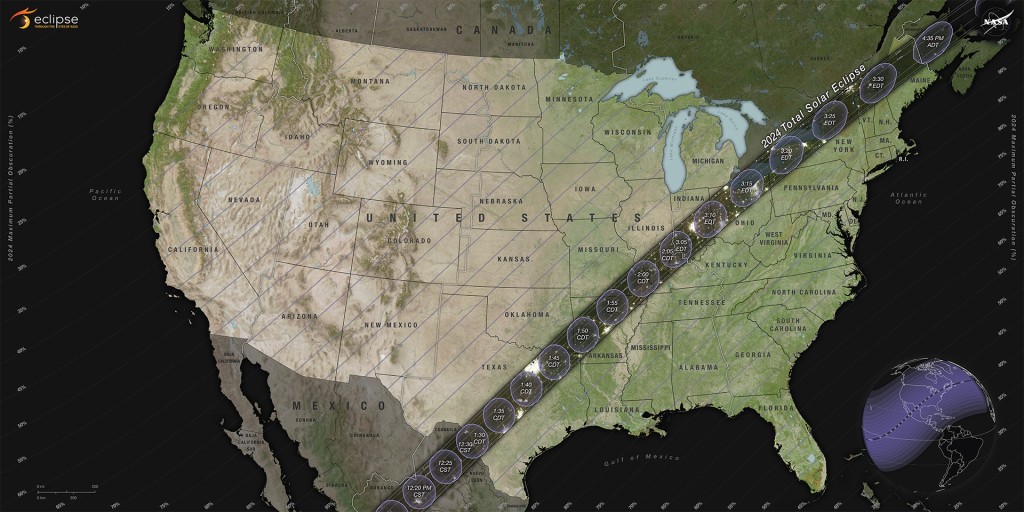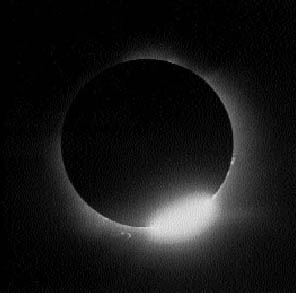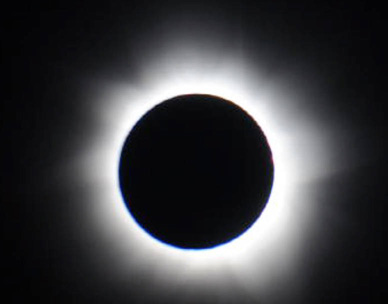An Unwanted Premiere!
In June 2005 I was in Washington D.C. for a most unusual premiere. A film based on the 2004 book called The Privileged Planet{1} was being introduced to an invitation only group of about 200 at the Smithsonian Institution’s National Museum of Natural History.
The Smithsonian was approached several months earlier about allowing their Baird Auditorium to be used for this special showing. They asked to see the film. Several people on the museum payroll viewed the film and said great, let’s show it. The inquiring organization was The Discovery Institute, the leading organization promoting Intelligent Design in the U.S. and abroad. Discovery was given instructions on how to use the Smithsonian logo on the invitation, was asked for a donation of $16,000, and told the premiere was a go.
However, when the invitations went out in late May, the Smithsonian was instantly barraged by calls and emails from disgruntled Darwinians demanding that the premiere be canceled. How dare the prestigious Smithsonian give aid and support to the Intelligent Design Movement by allowing this film on its premises? Never mind that the film has nothing to do with biological evolution and natural selection. People (even some who likely hadn’t seen the film or read the book) were on a rampage.
It didn’t take long for the Smithsonian to withdraw its co-sponsorship of the event although they said they would honor their commitment to allow the film to be shown. In a letter to Discovery they said, “Upon further review, the Museum has determined that the content of the film is not consistent with the mission of the Smithsonian Institution’s scientific research.”{2} Initially, the Smithsonian said Discovery would not be required to make the “donation,” but eventually kept $5,000 for expenses incurred.
As a Fellow of the Discovery Institute’s Center for Science and Culture I was issued an invitation, and as the storm of controversy raged in The Washington Post and New York Times, I decided to get myself to Washington for this controversial and special event.
The premiere itself was a bit of an anticlimax after all the fuss. Several local scientists, national TV and newspaper media, a Congressman from Texas, and other local dignitaries were treated to a special showing and question and answer period with the authors, Gonzalez and Richards. The reception was held two floors up in the Hall of Geology, Gems, and Minerals.
Most in attendance were quite impressed . . . and mystified! They were impressed with the quality and premise of the film and mystified how a purely scientific film could be so misrepresented. In what follows, we’ll explore the thesis of the book and film and see what all the fuss is about. For now, just remember science is pursued by people, and everyone has a worldview that can alter dramatically how science is perceived and what counts as science.
Is the Moon Just for Signs and Seasons?
When I was in the seventh grade, I remember standing in my best friend’s backyard with a box over my head in broad daylight. On one end of the box was a small pinhole. On the inside of the box, against the opposite side of the box from the pinhole, was a small piece of aluminum foil. The pinhole, when facing the sun, made a small circle, maybe one-half inch in diameter, on the aluminum foil wall. As the partial solar eclipse progressed, I could watch the progress of the moon shadowing the sun inside the box. I was fascinated that I could safely watch the partial solar eclipse with such a simple device.
You could watch partial solar eclipses on every planet in our solar system with a moon. But earth is the only planet where a full or total solar eclipse can be seen. It turns out that our moon is 1/400th the size of the sun. But the sun is 400 times farther away from earth than the moon. So when the moon comes between the sun and the earth a small portion of earth experiences a total solar eclipse, meaning the sun is fully blocked out by the moon.
When a total solar eclipse occurs, the sun is fully blocked out by the moon darkening the earth and providing a unique glimpse of the sun’s atmosphere or corona. Normally the sun’s corona is overwhelmed by the sun’s brightness, but in an eclipse the moon so completely shuts out the sun that the corona shines brightly for a few minutes. It is then that scientists can measure the light spectrum of the corona which reveals what is burning inside the sun. Otherwise we would not be able to measure the elemental makeup of the sun. So the fact that earth experiences a total eclipse of the sun makes our planet unique in the solar system with respect to what we can learn about what goes on in the sun’s interior.
If that was all that was unique about our moon, we could write it off as a curious coincidence. But the size, shape, and orbit of our moon do more for human life than just give us a glimpse of the sun’s atmosphere every so often. Without the moon, life as we know it on earth would be impossible.
It turns out that our moon is just the right size and distance from the earth that, in conjunction with the gravity of the sun, it causes substantial diurnal [daily] tides which mix the waters of the oceans, evening out their temperature and stirring their nutrients. With no moon, or a few smaller moons, the tides would lessen greatly in intensity, therefore reducing this mixing effect. Life would be limited to the upper few feet of the oceans, and complex life would be hard pressed to survive.
Is Earth’s Atmosphere Just for Breathing?
The book and film, The Privileged Planet, reveal many other earth systems as well that combine to make earth unique for life and scientific discovery.
Take a deep breath. Now exhale! No, this is not the latest Probe Ministries exercise routine. If you did what I just recommended on any other planet in the solar system, you’d be dead right now.
Our atmosphere of mostly nitrogen, oxygen, and just the right amount of water and carbon dioxide provides so much more than breathable air. We so easily take it for granted every time we breathe. Earth’s closest planetary cousins, Venus and Mars, have atmospheres dominated by carbon dioxide. Venus’s atmosphere is so thick you can’t see through it, and it creates surface temperatures as high as 900 degrees Fahrenheit. Mars’ thin carbon dioxide atmosphere contributes to such cold temperatures that carbon dioxide freezes at the poles.
Guillermo Gonzalez and Jay Richards, in their book The Privileged Planet, tell you more than you thought possible about the unique parameters of our atmosphere in allowing life and scientific discovery. Nitrogen, for example, is necessary for life as a critical component of the building blocks of DNA and proteins. Our atmosphere of seventy percent nitrogen also allows for a transparent atmosphere that allows light as we face the sun and dark nights that allow us to see the stars.
Oxygen, of course, is necessary for animal life, and our atmosphere contains just enough to support life and not so much as to poison life. Oxygen is also a transparent gas, keeping our atmosphere transparent for observation of our dark night skies.
Water as well is necessary for life, but water in our atmosphere, along with nitrogen, oxygen, and carbon dioxide, creates an atmosphere that is breathable but also is the best atmosphere to transmit light in the visible spectrum. Water also creates clouds over about two thirds of the earth at any one time. Clouds help control our temperature by reflecting some of the sun’s energy back out into space.
Without water in our atmosphere, we never would see a rainbow. Rainbows prompted scientists of the seventeenth century to search for an explanation of the rainbow’s beauty and mystery. This search eventually resulted in understanding the solar spectrum and the effect of prisms in bending light of different wavelengths.
Carbon dioxide is life’s major source of carbon, that versatile and stable element absolutely necessary for life of any kind. If earth were just five percent closer to the sun, however, we would end up much like Venus: nothing but carbon dioxide resulting in a runaway greenhouse effect and totally uninhabitable planet.
Once again, earth is shown to be just right—just right for life and just right for scientific observers. What an amazing coincidence!
More and more, scientists are coming to realize that the earth is not just some insignificant pale blue dot orbiting around an insignificant star. Our planet seems designed not just for life, but for scientific discovery as well.
So the Earth Has Oceans, Crust, Mantle, and Core. So What?
The starship Enterprise from Star Trek used a nifty force field deployed around the ship to protect it from oncoming photon torpedoes. During an attack, those on the bridge were always concerned with how the “shield” was holding. There was great consternation if energy levels dipped low enough to make the shield ineffective.
Our planet earth has a similar protective shield. Earth possesses a magnetic field around it that shields us from the harmful solar wind. Our atmosphere would be slowly stripped away without our magnetic field. This magnetic shield is generated because the earth is just the right size to maintain a hot liquid iron core. The heat from this core convects through the mantle, creating plate tectonics and electricity. The electricity generates our magnetic field. But you have to have the right size planet with a molten metallic core and a crust that weakens somewhat due to chemical reactions with water so it will bend and not break. All this benefits life.
The size of earth is important for other reasons. A smaller planet would lose its atmosphere much too readily, and its interior would cool too quickly, eliminating the protective magnetic field. A more massive earth would retain too much of harmful gases such as methane. On a more massive planet, the thicker atmosphere would make breathing much more difficult.
Earth’s voluminous quantities of water are also extremely necessary for life and even for technological life. Water helps regulate our atmosphere and, of course, provides the perfect soluble medium for life. Water is perhaps the most unique molecule in the universe with its unique solvent properties coupled with the fact that ice floats instead of sinks like all other solid/liquid pairs. This unique feature means that when temperatures are cold enough for water to freeze, only the top layer freezes and life can go on below the ice. If ice sank, then all liquid water would eventually freeze and life would be extinguished in some environments every winter.
In order for earth to maintain its watery oceans it needs to be the right distance from the sun. As noted earlier, if the earth were just five percent closer to the sun we would end up like Venus with thick hot clouds of carbon dioxide for an atmosphere. If we were just twenty percent farther away we would end up like Mars, a frozen wasteland. The heat coming from our just right liquid core also helps maintain our watery home.
All in all earth is a remarkable place for its size, distance from the sun, elemental make-up, size and closeness of the moon, presence of water, stable liquid iron core that generates a magnetic field, and so many other features. The suspicion of design and purpose quickly arises.
Has the Earth Been Designed for Multiple Purposes?
In many circles of academia, the idea that our earth is both designed for life and for scientific discovery is both surprising and resented. For years the notion that we are just an insignificant planet circling an ordinary star, otherwise known as the Copernican Principle, has dominated the physical sciences.
But discovery after discovery has altered that view, and has brought many kicking and screaming to a design perspective. Simon Conway Morris, a paleontologist from England, is quoted on the dust jacket of The Privileged Planet as saying:
In a book of magnificent sweep and daring, Guillermo Gonzalez and Jay Richards drive home the argument that the old cliché of no place like home is eerily true of Earth. Not only that, but if the scientific method were to emerge anywhere, Earth is about as suitable as you can get. Gonzalez and Richards have flung down the gauntlet. Let the debate begin; it is a question that involves us all.
The book and film of the same name have been wildly successful and controversial. At the Washington premiere I discussed earlier, scientists and legislators agreed that the thesis the authors propose is deserving of wide discussion.
A father brought his eight-year old son to a showing of the film we sponsored at Probe Ministries. I privately thought he would be too young. They had to leave before the film was done, but they purchased the DVD before they left and finished viewing it at home. As soon as Mom walked in the door, the eight-year old promptly began to explain the intricacies of solar eclipses, the size of the moon relative to the sun, and how these factors were not only a boon for life but also for scientific discovery.
The film does an excellent job of taking sometimes complex scientific concepts and communicating them in a way that most anybody can appreciate. This film deserves as wide a distribution as possible.
But because much of the scientific community remains locked in a purely naturalistic worldview, the perspective of purpose and design will continue to be resisted. However, parents and educators can readily use this excellent resource to simply investigate the facts and help to eventually gain Intelligent Design a much deserved place at the roundtable of scientific inquiry.
One other comment from the dust jacket says it well:
Not only have Guillermo Gonzalez and Jay Richards written a book with a remarkable thesis, they have constructed their argument on an abundance of evidence and with a cautiousness of statement that make their volume even more remarkable. In my opinion, The Privileged Planet deserves very special attention.
Notes
1. Guillermo Gonzalez and Jay Richards, The Privileged Planet (Washington D.C.: Regnery Publishing, Inc., 2004).
2. June 1, 2005 entry on Discovery Institute’s blog at www.evolutionnews.org/2005/06/.
© 2006 Probe Ministries

 During an eclipse, the heavens declare the glory of God by allowing us to see things about the sun we wouldn’t be able to observe any other way, beautiful and gloriously resplendent. Just before totality we can see “Baily’s Beads.” Only seen during an eclipse, bright “beads” appear at the edge of the moon where the sun is shining through lunar valleys, a feature of the moon’s rugged landscape. This is followed by the “diamond ring” effect, where the brightness of the sun radiates as a thin band around the circumference of the moon, and the last moments of the sun’s visibility explode like a diamond made of pure light. After the minutes of totality, the diamond ring effect appears again on the opposite side of the moon as the first rays of the sun flare brilliantly. These sky-jewelry phenomena are so outside of mankind’s control that witnessing them stirs our spirits (even on YouTube!) with the truth of Romans 1:20—”God’s invisible qualities—his eternal power and divine nature—have been clearly seen, being understood from what has been made, so that people are without excuse.”
During an eclipse, the heavens declare the glory of God by allowing us to see things about the sun we wouldn’t be able to observe any other way, beautiful and gloriously resplendent. Just before totality we can see “Baily’s Beads.” Only seen during an eclipse, bright “beads” appear at the edge of the moon where the sun is shining through lunar valleys, a feature of the moon’s rugged landscape. This is followed by the “diamond ring” effect, where the brightness of the sun radiates as a thin band around the circumference of the moon, and the last moments of the sun’s visibility explode like a diamond made of pure light. After the minutes of totality, the diamond ring effect appears again on the opposite side of the moon as the first rays of the sun flare brilliantly. These sky-jewelry phenomena are so outside of mankind’s control that witnessing them stirs our spirits (even on YouTube!) with the truth of Romans 1:20—”God’s invisible qualities—his eternal power and divine nature—have been clearly seen, being understood from what has been made, so that people are without excuse.” A total solar eclipse offers so much more, though, than Baily’s Beads and the Diamond Ring. At the moment of totality, the pinkish arc of the sun’s chromosphere (the part of the sun’s atmosphere just above the surface) suddenly “turns on” as if an unseen hand flips a switch. I knew God is very fond of pink because of how He paints glorious sunrises and sunsets in Earth’s skies, but those fortunate enough to see a total eclipse can see how He radiates pinkness from the sun itself! The heavens declare the glory of God!
A total solar eclipse offers so much more, though, than Baily’s Beads and the Diamond Ring. At the moment of totality, the pinkish arc of the sun’s chromosphere (the part of the sun’s atmosphere just above the surface) suddenly “turns on” as if an unseen hand flips a switch. I knew God is very fond of pink because of how He paints glorious sunrises and sunsets in Earth’s skies, but those fortunate enough to see a total eclipse can see how He radiates pinkness from the sun itself! The heavens declare the glory of God! For the few minutes of totality, the naked eye can see the sun’s lovely corona (Latin for crown) streaming out from the sun. We can’t see the corona except during an eclipse because looking straight at the sun for even a few seconds causes eye damage, and because the sun’s ball of fire overwhelms the (visually) fragile corona. This is another way that an eclipse allows us to see how the heavens declare the glory of God.
For the few minutes of totality, the naked eye can see the sun’s lovely corona (Latin for crown) streaming out from the sun. We can’t see the corona except during an eclipse because looking straight at the sun for even a few seconds causes eye damage, and because the sun’s ball of fire overwhelms the (visually) fragile corona. This is another way that an eclipse allows us to see how the heavens declare the glory of God.